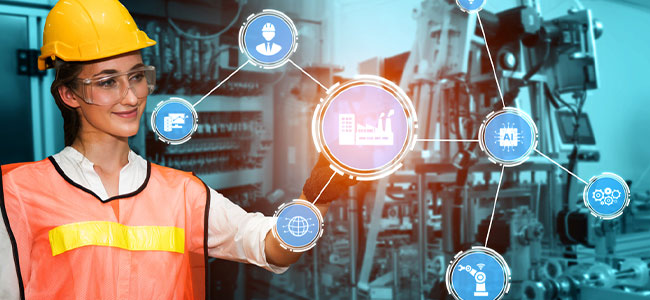
Embracing Change: How Connected Gas Detection is Reshaping Safety — and Organizations
Beyond safety technology, the rise of connected gas detection underscores a deep need for organizational change and human adaptation. How does change management help integrate connected gas detection into company safety cultures?
- By David Kopf
- Oct 11, 2023
In today’s worker safety world, technological evolution is constant, but it’s not just about the tools — it’s about the organizational transformation they usher in.
As connected gas detection systems elevate safety standards, a parallel narrative emerges: the intricate dance of change management. This journey from basic alarms to sophisticated networks isn’t solely a story of advanced hardware. It’s creating a roadmap for how companies are navigating, adapting, and embracing change, ensuring not just the safety of their workforce, but also cultivating a culture that understands, values, and integrates these technological leaps.
The Importance of Connected Gas Detection
Connected safety technology, particularly in the realms of lone worker safety and gas detection, has seen significant advancement. It has moved from personal monitors to a sophisticated cloud-connected network of devices. This network offers advanced data analysis and enhanced reporting capabilities.
Today’s safety measures have vastly improved from the past, where alerts remained local to the worker. In earlier times, when an employee faced a gas hazard, the device might have alerted the user, but if the user couldn’t act, no one else would know. Tragically, this often led to late interventions and devastating outcomes.
Now, with the evolution in technology, an immediate alert system ensures that when a high gas concentration is detected or when a worker signals distress, immediate assistance is dispatched. These systems work 24/7, providing a lifeline to workers in distress, ensuring their safety, and reducing the potential for tragic incidents.
“I think corporations are realizing the importance of connected technology and investing in the implementation because it provides visibility to improve the safety of the employees both proactively and reactively,” says Ealat Chaachouh, Manager of Client Implementation in North America for Blackline Safety, which offers connected gas detection solutions. “We can provide reporting and visibility on the safety of the employee to drive safety culture change, and also improve workflow safety process, as well as the automation and compliance within corporations.”
Connected gas detection technology isn’t limited to just one kind of industry or a specific company size. Chaachouh notes her company’s technology has been implemented in more than 15 industries, including oil and gas, biotech, pharma, utilities, transportation and logistics.
This article originally appeared in the October 2023 issue of Occupational Health & Safety.